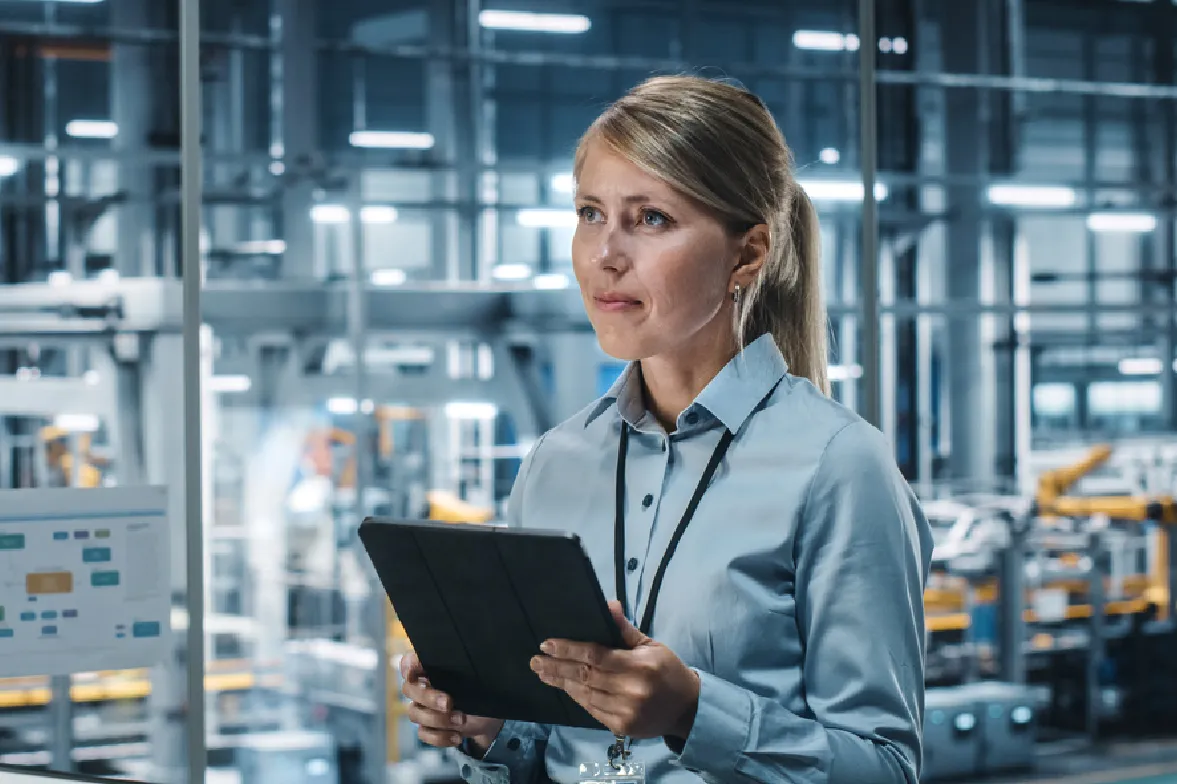
Key takeaways
- AI is an augmentation, not a replacement. Workers who learn to leverage AI will outperform those who resist it, using technology to enhance productivity, creativity, and decision-making.
- Upskilling is essential. Building an AI-ready workforce requires structured training programs, continuous learning opportunities, and a culture that embraces experimentation.
- Human-AI collaboration drives success. Combining AI’s analytical capabilities with human judgment, creativity, and empathy creates stronger, more adaptable teams.
AI (artificial intelligence) is continuing to advance and reshape industries worldwide. Companies are now tasked with preparing their workforce to work alongside AI technologies. The first step in leading AI-ready teams is to realize — and help employees understand — that AI is an augmentation rather than a substitution.
Augmentation refers to enhancing human capabilities with AI. For example, for an employee who is already good at something, AI will help make them great.
On the other hand, substitution implies replacing humans with AI – which is a false narrative that prevents workers from wanting to use AI. In the end, workers who don’t use AI won’t be replaced by AI, but by workers who leverage AI.
What is an AI-augmented workforce?
An AI-augmented workforce incorporates human employees and technology working on tasks together. It’s a new approach to work that helps employees by automating repetitive tasks and providing insights to support decision-making.
By adopting AI-powered solutions, workers can streamline their workloads and say goodbye to “busy work.” Thus, giving them more time to focus on the work that truly matters rather than mundane tasks.
Back in 2017, Gartner predicted that AI would produce more jobs than it would displace. And though their statement was shocking at the time, as we near 2024, the data is proving true with AI augmentation at the forefront.
77% of companies have fully implemented or are exploring adopting cognitive and AI technologies within their workforce. AI is not a futuristic vision but is being integrated into workplaces worldwide right now.
3 benefits of an AI-augmented workforce
Focusing on the advantages of an AI-augmented workforce during this workplace shift is essential. Consider the following three main benefits:
-
Increase productivity, efficiency, and creativity
According to a recent McKinsey report, AI can increase the global gross domestic product (GDP) by up to $13 trillion by 2030 through increased productivity, efficiency, and creativity.
How, exactly?
AI excels at automating mundane and repetitive tasks, allowing employees to shift their energy towards more strategic and value-added work. Not only does this increase job efficiency and productivity, but it elevates job satisfaction. With more time, workers have more opportunities to tap into their creative sides, helping them feel more fulfilled with their jobs.
-
Improve decision-making and problem-solving
AI technology enables workers to make better decisions quicker. It can process vast amounts of data at a rate humans cannot — saving time and uncovering valuable insights employees may not have seen on their own.
That said, human workers are still needed. While AI can identify patterns and trends and indicate potential risks or opportunities, employees must review this data, consider factors the technology couldn’t, and determine the best course of action.
With employees and AI working together — as an augmented workforce — companies can problem-solve at a speed and effectiveness they otherwise couldn’t.
-
Enhance employee skillset and career growth
Today’s technological advances are changing the demand for skills at an accelerated pace. But don’t let that intimidate you; upskilling in the age of AI will only help both employees and employers. The faster your workforce has learned the skills needed to work with AI, the more successful the organization.
Not to mention, employees learning new skills are more likely to advance within a company. Mastering AI-related skills helps workers solve problems and perform their jobs better. The mind shift needed to learn foundational AI skills and adapt to this new environment creates resilient employees who can withstand and take advantage of the chaos of a rapidly evolving business landscape.
There’s no denying it: With more workers focused on upskilling and AI literacy — the ability to understand and interpret AI solutions — everybody wins.
How to prepare your workplace for automation and augmentation
As AI solutions continue to alter the workplace, companies must take proactive steps to adapt. With a strategic approach, you can prepare your workforce to work successfully side by side with AI technology.
There are three essential pillars to preparing your workplace:
-
Implementing upskilling programs
Upskilling is crucial to building an AI-augmented workforce. It’s an organization’s job to offer upskilling programs that empower employees with the necessary AI-related skills. Training programs, workshops, or online courses can provide workers with the expertise they need to leverage AI tools effectively.
If your business invests in AI technology, you must also put time and money into upskilling programs. AI is only as great as the humans it’s collaborating with.
Think about a brand-new car with the all the bells and whistles. Now, picture someone behind the wheel who doesn’t know how to drive versus someone who has been driving for decades. The car will be more of a benefit to the person who knows how to operate it. Anyone else is likely to crash the vehicle.
AI is an investment, and you want to make sure your company is getting the most out of the software. Providing your employees with the best upskilling programs helps guarantee it happens
-
Promoting a lifelong learning culture
In the face of AI advancements, it’s important to establish a learning culture within your organization. Why? Because AI is constantly evolving — what was ‘new’ six months ago might already be outdated today — so your employees must develop with it.
Fostering continuous learning and adaptability will make all the difference in an AI-augmented workforce. You can do this by encouraging your employees to have a growth mindset and embrace company-provided resources for reskilling. Resources could include e-books, educational videos, lunch-and-learn sessions, mentorship programs, or online courses.
Another way to promote a learning culture is to encourage workers to experiment with AI, exploring the technology to learn from successes and failures. In the AI era, employees comfortable with change and failure will be your company’s biggest asset.
-
Emphasizing Human-AI collaboration
While this pillar might seem obvious, it’s usually the most overlooked. Many people today still fear AI will take their jobs rather than help them at their jobs. Leaders must emphasize the collaborative nature of human-AI interactions, so employees don’t misunderstand and fear AI as a replacement. Doing this takes effort and consistency.
Put actions in place that encourage workers to understand the strengths and limitations of AI systems, as well as identify where AI can augment human skills and decision-making. This includes creating opportunities for cross-functional collaborations where teams work alongside AI to solve complex problems — showing them firsthand the benefits of blending the unique strengths of people and AI.
Continue highlighting why human skills such as judgment, creativity, critical thinking, and empathy are important to your organization. Then, focus on how those strengths, mixed with the AI’s unique value, enhance their work. The goal of this collaborative approach is to build trust, reduce resistance to change, and empower your people to utilize AI effectively.
Create an AI-driven workplace
In an AI-driven workplace, it isn’t about humans versus technology. It’s about harnessing both to create a more creative and innovative workplace. Building an AI-augmented workplace is the future of work.
The conscious collaboration between AI and humans is key to organizational success. While AI technology can ideally make intelligent decisions without human bias and error, it must partner with human creativity and empathy. Because no matter how advanced AI seems, it will always lack the unique skills human employees bring to the workplace.
To learn more, download Eptura’s latest e-book
The importance of AI in the future of work.
Frequently asked questions
It refers to a workplace where humans and AI work together, with AI handling repetitive tasks and providing insights, while employees focus on strategic, creative, and decision-making activities.
By investing in upskilling programs, fostering a culture of continuous learning, and promoting collaboration between human teams and AI systems to build trust and reduce resistance.
AI can process large datasets and identify trends quickly, but human workers bring critical thinking, creativity, empathy, and contextual understanding that AI cannot replicate.








